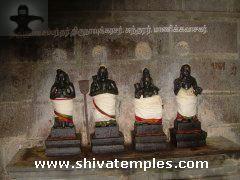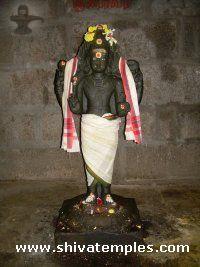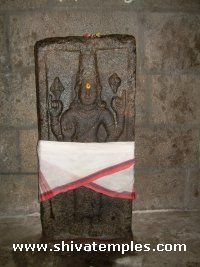Athulyanathar Temple, TiruArayaninallur
Location: TiruAraiyaninallur (Now known as Arakandanallur)
Deity known as: Athulya Nathar, Oppillaadha Eswarar, Oppillaadha Nayanaar
Female Deity: Azhagiya Ponnammai, Soundarya Kanakaambikai
Pathikam: Sambandar - 1
Gallery - Athulyanathar Temple
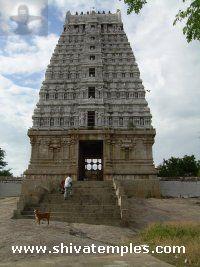

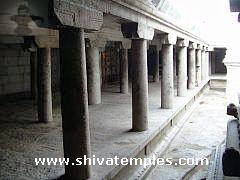
How to Reach
This shiva temple is on the north bank of river 'Pennai' at Tirukkovilur. Frequent bus services are available from Villupuram and Tiruvannamalai to Tirukkovilur.
Nearby Temples
| 1 | Tirukkovilur - 3 Kms | |
| 2 | Tiruvannamalai - 35 kms | |
| 3 | Trivikrama Perumal Temple - Divyadesam - 3.5 kms |
Temple Address
Arulmighu Oppillaadha Eswarar TempleArakandanallur
Arakandanallur Post
Tirukkovilur Taluk
Villupuram District
PIN 605752
Temple Layout
The Rajagopuram and Outer Prakaram
The majestic Rajagopuram, perched atop a massive rock, rises in seven splendid tiers, adding to the temple’s grandeur. As one enters the outer prakaram through this gateway, the first shrine encountered is that of Valampuri Vinayaka, revered as the Sthala Vinayakar of this temple. Near the Vinayaka sannidhi, one can also see an image of Thirugnanasambandhar, depicted holding a musical instrument resembling a percussion. Adjacent to the Valampuri Vinayaka shrine stands the Viswanatha Lingam, and within this same prakaram, there is also a sannidhi for Annamalayar.
Inner Prakaram and Sanctum
As we pass through another gateway, we draw nearer to the sanctum of the presiding deity, Athulyanathar, who faces west. The sanctum is uniquely surrounded by a moat-like structure. Within the prakaram encircling the shrine, there are sannidhis dedicated to Navagraha, Bhairava, a beautifully stone-carved Narayana, Narthana Ganapathy, and Mahavishnu, who stands gracefully holding his Sudarshana Chakra. The Saptha Mathas are elegantly arranged in a row, each crafted with fine detail. The Nataraja Sabha is also located within this prakaram, adding to the sanctified ambience of the temple complex.
Female Deity and Muruga
Sri Soundra Kanakambika, the divine consort of Athulyanathar, is enshrined in a south-facing sannidhi. In this temple, Muruga is depicted with one face and six hands, each holding a weapon, signifying his valour and divine power. He is accompanied by his consorts Valli and Deivayanai, who grace a north-facing sannidhi, completing the sacred triad.
Temple Significance
Bheema Theertham and Pandava Connection
Nestled amidst the rocky terrain near the temple is a sacred water body known as Bheema Theertham, named after Bheema, one of the five Pandava brothers from the Mahabharata. Legend holds that Bheema himself created this pond for Draupadi (Panchali) to bathe in during their exile. Close to the Rajagopuram, five large cave-like structures can be seen, which are believed to have served as shelters for the Pandavas during their forest sojourn. Though presently unoccupied, these ancient formations stand as silent witnesses to the temple’s deep mythological and historical significance.
Divine Blessings
According to legend, after their victory in the Kurukshetra war and subsequent coronation, the Pandavas returned to this sacred site to offer their prayers to Athulyanathar and Sri Soundra Kanakambika. It is believed that just as the Pandavas were blessed by Athulyanathar with the restoration of their kingdom and lost possessions, devotees who worship here with faith are also bestowed with similar blessings — regaining their lost fortunes and prosperity through the divine grace of Athulyanathar and Sri Soundra Kanakambika.
Sambandar's Pathikam
The Pathikam composed by Thirugnana Sambandar for this sacred shrine is found in the Third Tirumurai. In his verses, the saint praises Lord Athulyanathar as the compassionate one who removes all sorrows, absolves the sins of those who worship Him with love and devotion, and grants eternal bliss in Shivaloka to His faithful devotees.
More Gallery

